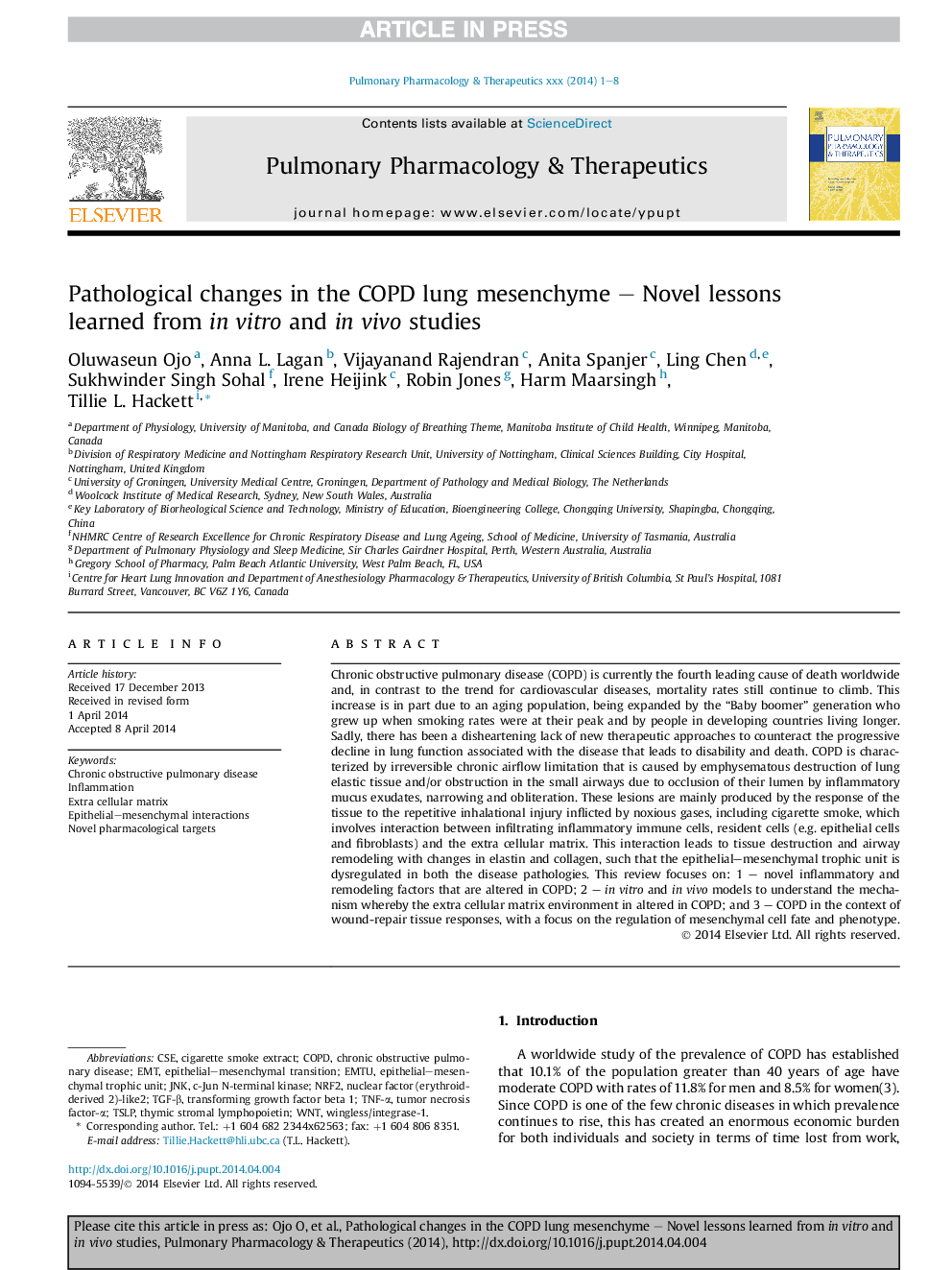| Article ID | Journal | Published Year | Pages | File Type |
|---|---|---|---|---|
| 5845736 | Pulmonary Pharmacology & Therapeutics | 2014 | 8 Pages |
Abstract
Chronic obstructive pulmonary disease (COPD) is currently the fourth leading cause of death worldwide and, in contrast to the trend for cardiovascular diseases, mortality rates still continue to climb. This increase is in part due to an aging population, being expanded by the “Baby boomer” generation who grew up when smoking rates were at their peak and by people in developing countries living longer. Sadly, there has been a disheartening lack of new therapeutic approaches to counteract the progressive decline in lung function associated with the disease that leads to disability and death. COPD is characterized by irreversible chronic airflow limitation that is caused by emphysematous destruction of lung elastic tissue and/or obstruction in the small airways due to occlusion of their lumen by inflammatory mucus exudates, narrowing and obliteration. These lesions are mainly produced by the response of the tissue to the repetitive inhalational injury inflicted by noxious gases, including cigarette smoke, which involves interaction between infiltrating inflammatory immune cells, resident cells (e.g. epithelial cells and fibroblasts) and the extra cellular matrix. This interaction leads to tissue destruction and airway remodeling with changes in elastin and collagen, such that the epithelial-mesenchymal trophic unit is dysregulated in both the disease pathologies. This review focuses on: 1 - novel inflammatory and remodeling factors that are altered in COPD; 2 - in vitro and in vivo models to understand the mechanism whereby the extra cellular matrix environment in altered in COPD; and 3 - COPD in the context of wound-repair tissue responses, with a focus on the regulation of mesenchymal cell fate and phenotype.
Keywords
WntEMTUTGF-βTSLPNrf2CSEJnkc-Jun N-terminal kinaseinflammationCOPDChronic obstructive pulmonary diseasetransforming growth factor beta 1Epithelial–mesenchymal interactionstumor necrosis factor-αEMTcigarette smoke extractTNF-αThymic stromal lymphopoietinextra cellular matrixEpithelial–mesenchymal transition
Related Topics
Health Sciences
Medicine and Dentistry
Pulmonary and Respiratory Medicine
Authors
Oluwaseun Ojo, Anna L. Lagan, Vijayanand Rajendran, Anita Spanjer, Ling Chen, Sukhwinder Singh Sohal, Irene Heijink, Robin Jones, Harm Maarsingh, Tillie L. Hackett,
